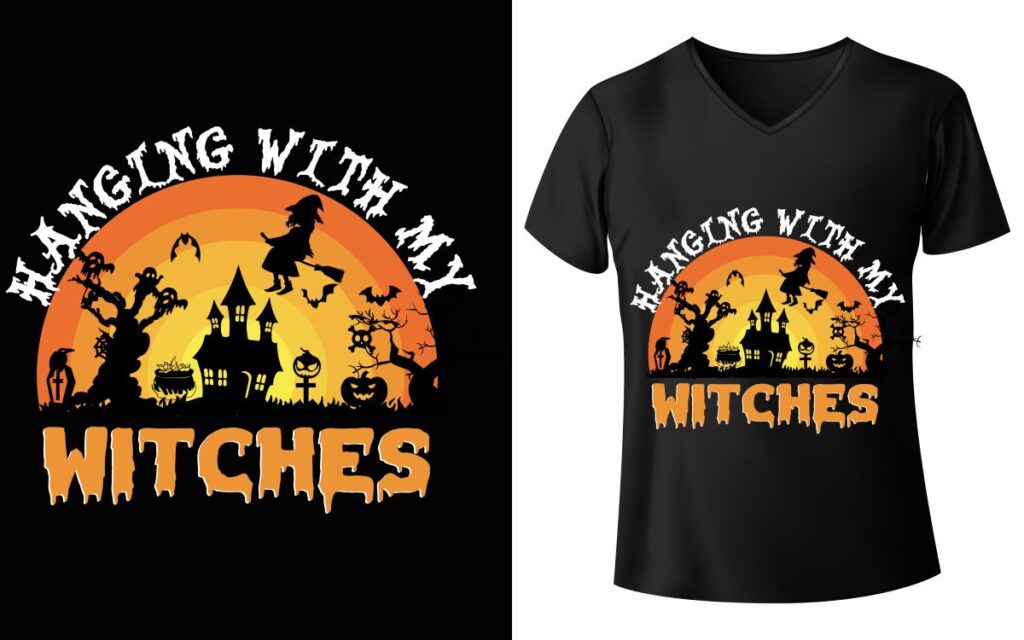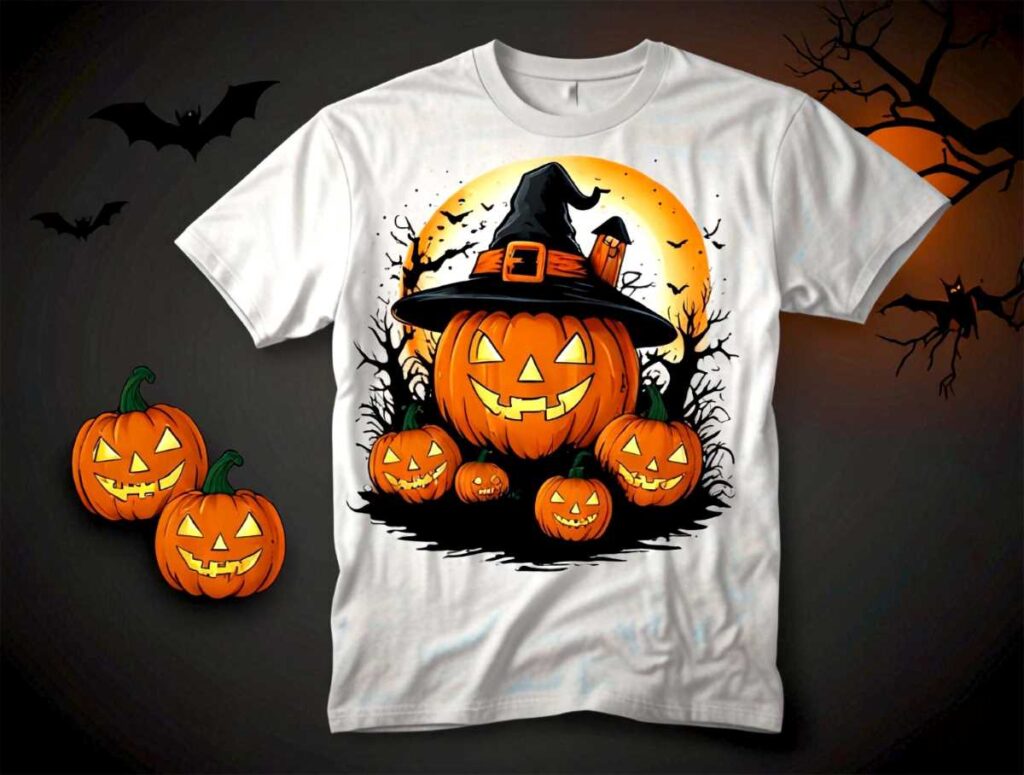In the ever-evolving realm of custom apparel printing, DTF Transfers have emerged as a game-changing technique among various printing methods. Direct to Film (DTF) printing stands out for its ability to deliver vibrant and intricate designs without the extensive setup often associated with traditional printing methods like screen printing. With a focus on lower costs for smaller runs and remarkable versatility across fabric types, DTF printing offers distinct advantages for both businesses and consumers. As the printing landscape shifts, understanding DTF printing advantages in contrast to traditional approaches is crucial for savvy decision-making. This article will delve deeper into the specific benefits and challenges of DTF Transfers, helping you navigate the options available for your custom apparel needs.
In the world of personalized garment production, DTF Transfers, also known as Direct to Film printing, are revolutionizing how designs are applied to fabrics. This innovative method showcases significant differences from conventional printing techniques, such as screen printing, by allowing for rapid application of detailed designs. Businesses now have a cutting-edge alternative that alleviates the complexities often tied to more established printing methods. By exploring the efficacy and popularity of these transfers, we can better understand their potential in the dynamic field of custom printing. Join us as we investigate the scope of DTF Transfers and their rising prominence in the garment manufacturing landscape.
Understanding the Basics of DTF Printing
DTF printing, or Direct to Film printing, represents a significant leap in the world of custom apparel printing. This innovative method allows businesses to transfer unique designs onto various fabrics with remarkable ease and efficiency. By printing designs onto a special film that is then heat-pressed onto the fabric, DTF printing eliminates many of the complexities associated with traditional printing methods like screen printing. This not only reduces the time required for setup and production but also allows for more intricate and colorful designs without the limitations of conventional practices.
The versatility of DTF transfers is one of its standout features. Unlike traditional methods that often restrict the type of fabric you can use, DTF printing can adapt to a wide variety of materials, including cotton, polyester, and even blends. This means that brands can produce a greater array of products, from stylish t-shirts to trendy hoodies, catering to diverse customer preferences. The rapid speed at which DTF transfers can be produced has made it an increasingly popular option among smaller businesses and crafters looking to fulfill quick orders without compromising on quality.
Key Advantages of DTF Transfers
One of the main advantages of DTF transfers over traditional printing methods is the financial aspect. DTF printing significantly lowers initial costs, especially for businesses that need small runs or custom designs. With conventional methods like screen printing, the costs can quickly balloon due to setup fees and minimum order quantities. DTF technology allows companies to print on demand, which means businesses can respond quickly to customer needs without the burden of excess inventory.
Moreover, DTF printing stands out for its design flexibility. It supports vibrant colors and intricate patterns, allowing designers to realize their creative visions without the limitations posed by older techniques. Additionally, since the application process is less labor-intensive than traditional methods, businesses can offer personalized apparel with ease, making it an attractive option for niche markets and special events.
Cost Comparison: DTF vs. Traditional Printing
When evaluating DTF transfers in comparison to traditional printing methods such as screen printing, understanding the cost implications is crucial. While DTF printing has lower setup costs, traditional methods can be more cost-effective for large-volume orders. Bulk production with screen printing offers significant savings in per-unit costs, making it a preferred choice for larger businesses looking to produce a large number of identical items.
However, the distinction lies in the scale of production. For businesses that frequently require custom designs or lower quantities, DTF printing can help mitigate financial risks associated with inventory. As such, choosing between DTF and traditional printing can depend not only on the cost but also on the anticipated quantity and type of orders a business expects to fulfill.
The Durability Factor in DTF Printing
Durability is a critical consideration in the world of custom apparel printing. DTF transfers can produce high-quality designs that look great initially, but concerns regarding long-term durability compared to screen printing arise. Screen printing is generally known for its resilience, offering prints that can withstand multiple washes without fading or cracking. This makes it a reliable choice for items such as workwear or heavily-used apparel, where longevity is paramount.
On the other hand, advances in DTF technology are addressing these durability issues. Many users are experiencing satisfactory durability with proper care of DTF printed items, leading to increasing confidence in this method. However, potential users must weigh the importance of durability against the convenience and flexibility offered by DTF printing to make an informed choice.
Trends Influencing the Future of Printing Methods
The custom apparel printing landscape is rapidly evolving. As consumer preferences shift towards personalized and quick-turnaround products, methods like DTF printing are gaining ground. Market research indicates that the DTF printing market is projected to see substantial growth as technological advancements enhance its accessibility and affordability. Innovations are paving the way for more user-friendly solutions, allowing even small companies or individual crafters to participate in the printing market.
Simultaneously, traditional methods are also adapting to remain competitive. For instance, screen printing companies are exploring ways to streamline their processes and incorporate modern technology, such as automated printing systems. The intersection of these trends suggests that both DTF printing and traditional methods will continue to coexist, each catering to different segments and needs within the custom apparel market.
Concluding Thoughts on DTF Printing vs. Traditional Printing
In conclusion, the choice between DTF transfers and traditional printing methods is dependent on various factors including the scale of production, design complexity, and budget considerations. For businesses focused on customization and quick turnarounds, DTF printing presents an attractive option. Conversely, when durability and cost-efficiency for larger quantity orders are priorities, traditional printing methods still hold a strong advantage.
Understanding the unique advantages and limitations of each method enables businesses to make informed decisions tailored to their specific needs and market demand. As technology continues to advance, the lines between DTF and traditional methods may blur, leading to a more integrated approach to custom apparel printing that can offer the best of both worlds.
Frequently Asked Questions
What are the main advantages of DTF Transfers in custom apparel printing?
DTF Transfers offer several advantages, including lower setup costs compared to traditional printing methods, design flexibility with vibrant colors and intricate patterns, high fabric compatibility across materials like cotton and polyester, and improved speed due to advancements in automated technology. This makes DTF printing an attractive choice for custom apparel.
How does DTF printing compare to traditional methods like screen printing?
While screen printing is cost-efficient for large volumes and known for its durability, DTF printing excels in flexibility and convenience for small runs. DTF Transfers allow for quick design changes and can be applied to various fabric types without extensive setup, making them ideal for custom apparel printing.
Can DTF Transfers be used on all types of fabrics?
Yes, DTF Transfers are compatible with a wide range of fabrics, including cotton, polyester, and blends. This versatility sets DTF printing apart from traditional methods, which may have limitations on the types of materials they can effectively print on.
Are DTF Transfers more cost-effective for small orders compared to traditional printing?
Absolutely. DTF Transfers require lower initial investments and setup costs for small orders, making them a cost-effective solution for businesses wanting to print custom designs without the overhead associated with traditional printing methods like screen printing.
What should I consider regarding the durability of DTF prints?
While DTF prints generally offer good durability, they may not match the longevity of screen prints, especially after multiple washes. It’s essential to evaluate your project’s needs—if high durability is a priority, traditional screen printing could be a better fit for long-lasting custom apparel.
How are recent innovations in DTF printing shaping the custom apparel industry?
Recent innovations in DTF printing techniques, such as user-friendly solutions and automated equipment, are greatly enhancing speed and efficiency. This growth encourages more businesses to adopt DTF Transfers, making custom apparel printing more accessible than ever.
| Feature | DTF Transfers | Traditional Printing |
|---|---|---|
| Setup Cost | Lower for small orders | Higher for small orders |
| Design Flexibility | High | Moderate |
| Fabric Compatibility | Very High | Limited |
| Initial Investment | Lower | Higher |
| Durability | Good but varies by application | Excellent |
| Speed | Fast with modern tech | Moderate |
| Bulk Production | Not ideal | Perfect for large orders |
Summary
DTF Transfers are revolutionizing the custom apparel printing world with their unique advantages that cater to modern demands. This innovative method stands out for its cost-effectiveness, design flexibility, and compatibility with a wide variety of fabrics. As businesses seek quick, efficient solutions that accommodate smaller orders without compromising quality, DTF printing emerges as a top choice. While traditional printing methods maintain their place for bulk-order durability and cost efficiency, the growth trajectory of DTF technology suggests a promising niche in the industry. Ultimately, understanding the strengths of DTF transfers allows businesses to leverage these innovations for their specific needs in custom apparel.



